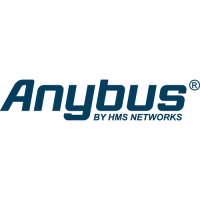CIP Objects 71
Doc.Id. HMSI-27-212
Anybus CompactCom 40 EtherNet/IP
Doc.Rev. 1.5
Class 0 Connection Details
General
Class 0 connections are only supported for safety connections. The CompactCom device will act as a
transparent bridge for safety connections, meaning that open and close requests for safety connections
and safety I/O data will be forwarded to the safety module. Class 0 connections use UDP transport.
Class 1 Connection Details
General
Class 1 connections are used to transfer I/O data, and can be established to instances in the Assembly
Object. Each Class 1 connection will establish two data transports; one consuming and one producing.
The heartbeat instances can be used for connections that shall only access inputs. Class 1 connections
use UDP transport. Null forward open is supported.
- Total number of supported class 0 connections: 2
- Max input connection size:
241 bytes
a
a. Including the Mode Byte, Actual, Complement and Time stamp sections
- Max output connection size:
239 bytes
a
- Supported RPI
b
:
b. Requested packet interval
1... 20000 ms
- Total number of supported class 1 connections: 4
- Max input connection size: 1448 bytes with Large_Forward_Open, 509 bytes with For-
ward_Open
- Max output connection size: 1448 bytes with Large_Forward_Open, 505 bytes with For-
ward_Open
- Supported RPI
a
:
a. Requested packet interval
1... 3200 ms
-T
b
->O
c
Connection type:
b. Target, in this case the module
c. Origin, in this case the master
Point-to-point, Multicast, Null
- O->T Connection type: Point-to-point, Null
- Supported trigger types: Cyclic, CoS (Change of State)
- Supported priorities: Low, High, Scheduled, Urgent

